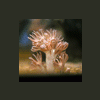Zaloguj się, aby obserwować tę zawartość
Obserwujący
0
Rekomendowane odpowiedzi
Ten wątek jest dość stary. Należy rozważyć rozpoczęcie nowego wątku zamiast ożywienia tego.
Zaloguj się, aby obserwować tę zawartość
Obserwujący
0
-
Ostatnio przeglądający 0 użytkowników
Brak zarejestrowanych użytkowników przeglądających tę stronę.


